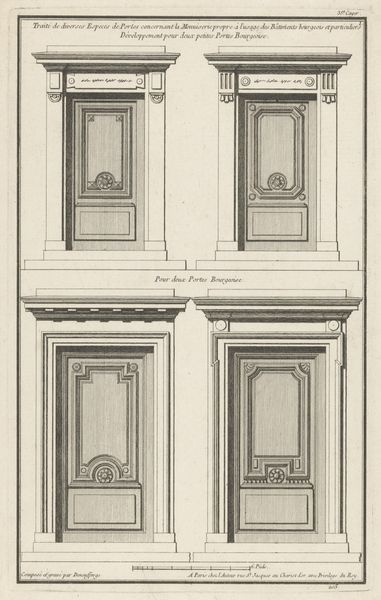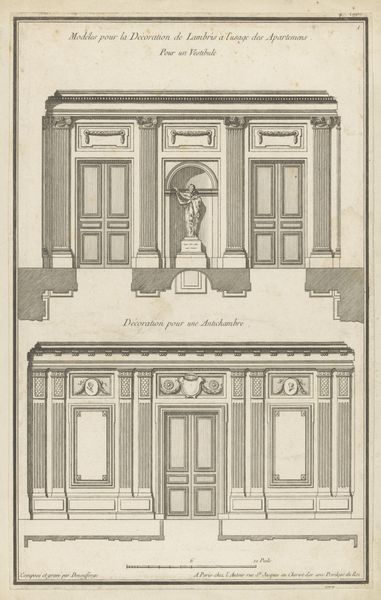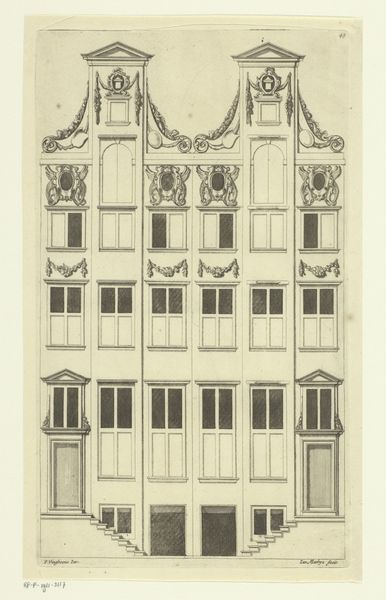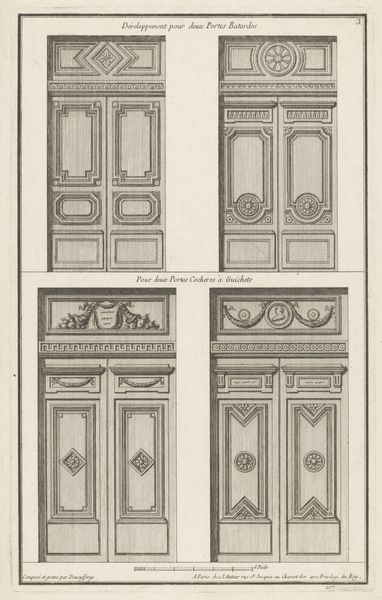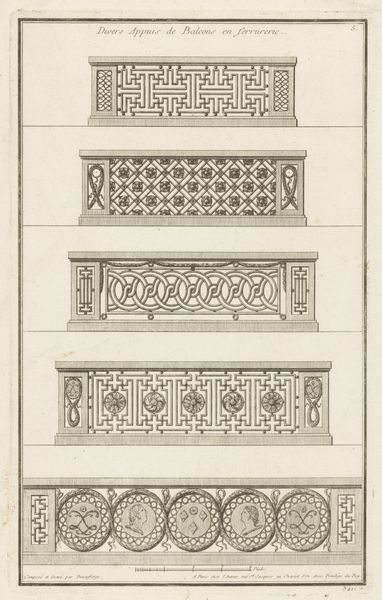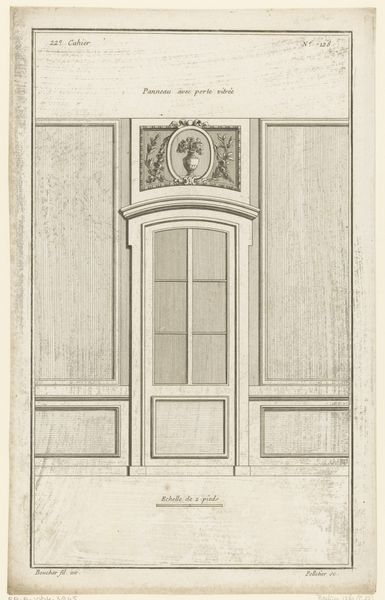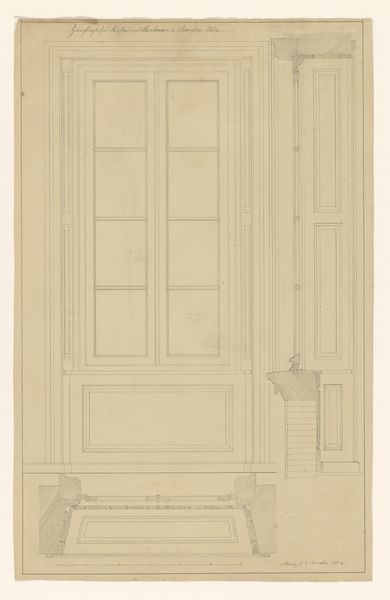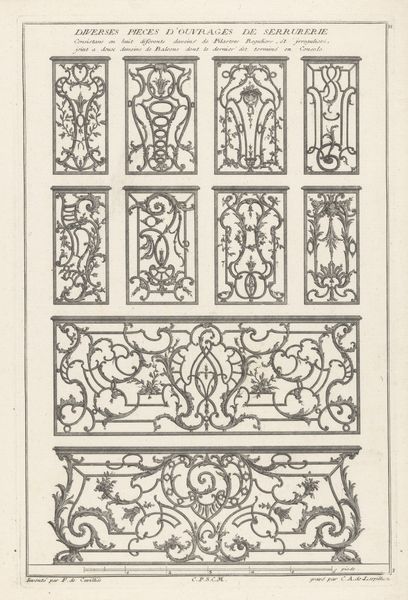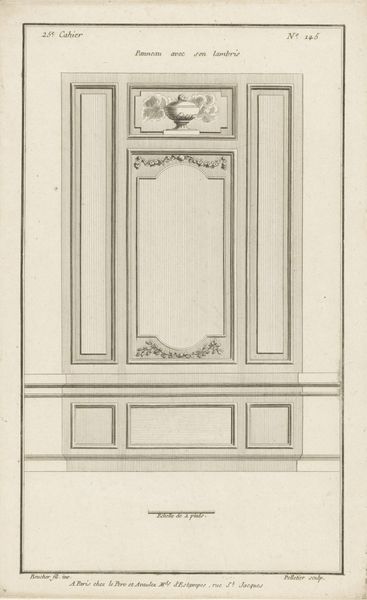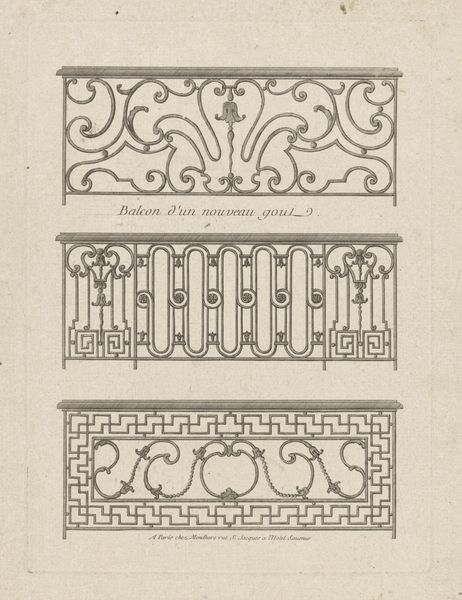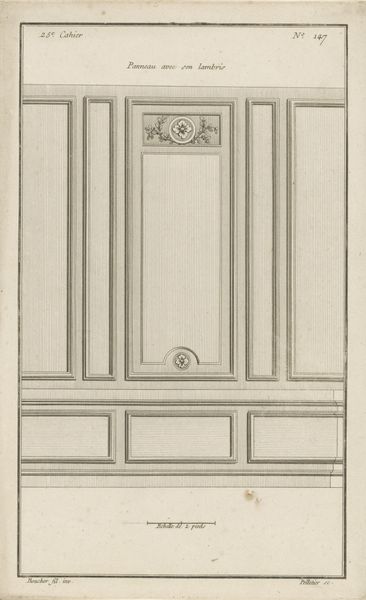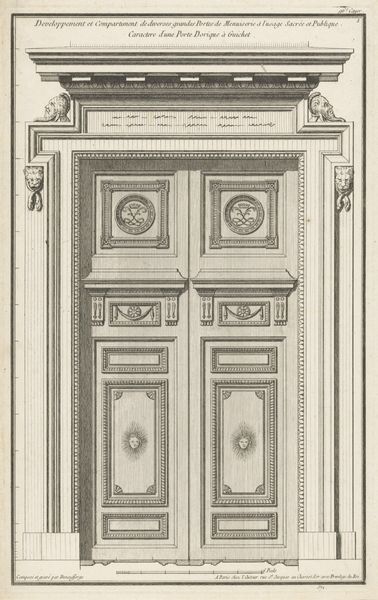
drawing, print, paper, engraving, architecture
#
drawing
#
neoclacissism
# print
#
paper
#
history-painting
#
engraving
#
architecture
Dimensions: height 367 mm, width 231 mm
Copyright: Rijks Museum: Open Domain
Curator: "Vestibule en antichambre," created around 1760 by Jean François de Neufforge. This print showcases Neoclassical architectural designs for interior spaces. Seeing it, I immediately consider the socioeconomic implications embedded within it. What jumps out at you, considering it’s crafted through engraving and printmaking? Editor: The level of detail is amazing, especially given that it’s a print. The precision really emphasizes the grandeur of the architectural style. How do you interpret the significance of the printmaking process in relation to these designs? Curator: The printmaking process is absolutely central here. Engraving allowed for mass production and dissemination of these designs. It facilitated the aspirations of a rising bourgeoisie to emulate aristocratic taste. Consider how the laborious process of creating these plates connects to the broader consumption of architectural ideals by the aspiring middle class. Were these designs achievable, or simply aspirational for the rising class? Editor: That's a fascinating point! I guess I hadn’t considered that. The very act of mass-producing these designs made them available to a wider audience, influencing taste and expectations of interior space. So, it is not just about aesthetic ideals but about access and the material reality of creating them. Curator: Precisely. It reveals a complex interplay between labor, materials, and social ambition. The physical act of carving those lines onto the plate, replicated and consumed by those seeking to embody a certain status. Thinking about materiality helps decode this. Editor: Looking at it from that perspective, it really highlights the connection between the artist's labor, the materials used, and the societal context that shaped both the creation and the reception of this work. Curator: Exactly! Considering art this way gives us a far more complete understanding than merely admiring the pretty picture, doesn't it?
Comments
No comments
Be the first to comment and join the conversation on the ultimate creative platform.
